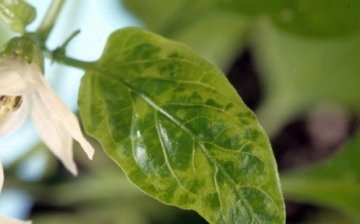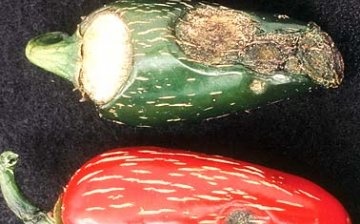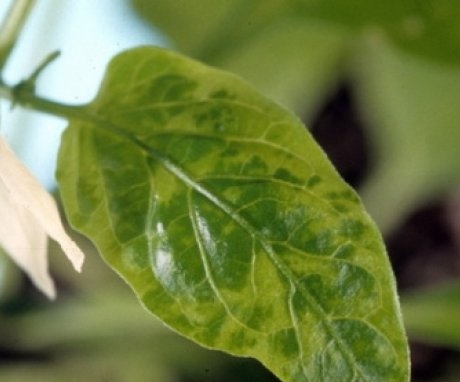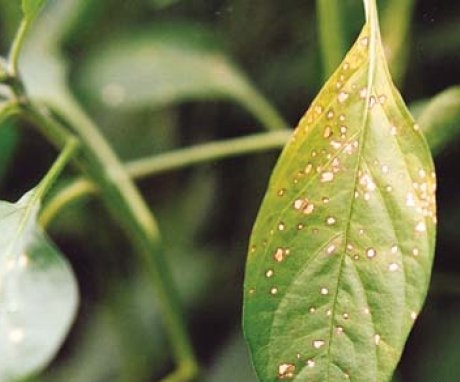Diseases of bell peppers and measures to combat them
Thanks to the extraordinary taste and a large amount of nutrients, a large part of gardeners grow sweet peppers. He seems to be unpretentious in care, but all kinds of diseases and pests destroy a good part of the crop.
Content:
Diseases of sweet pepper
To know what to be ready for, you need to study ahead of time illness sweet pepper. The most common are such as:
- verticillary wilting. This disease is caused by a fungus that lives in the soil for about 15 years. During planting or processing, wounds can sometimes appear in the root system of the plant, through which sweet peppers are affected by verticillary wilting. Signs of the disease appear before the flowering of pepper in the form of deformed internodes and lesions of the lower leaves with mottling. In the future, they wither, turn yellow and fall off. If the pepper is infected at an early stage of its development, then the ovary does not form, and if at a later stage, small fruits wrinkle and disappear;
- late blight. A dangerous fungal disease that affects the leaves, stems and fruits of pepper. Brown spots appear on the leaves and stems with a pale green area around them. When the weather is dry, the affected areas dry out, and in damp weather, they rot. The development of the disease is facilitated by a significant difference in day and night temperatures, accompanied by increased humidity in the form of fog and dew at night and bright sunlight during the day;
- sclerotinosis (white rot). Fungal disease that develops in the root part. It manifests itself in the form of a white bloom, and inside the stem of the pepper - in the form of hard black formations that soften and disrupt the flow of water and nutrients from the soil. The plant withers and dies. At a later date, when the fruits are formed, they become watery-soft with a white bloom;
- gray rot. Basically, the disease develops in greenhouses in case of violation of humidity and temperature conditions. If, at high humidity, the temperature drops to +10 degrees, then the entire aerial part of the pepper becomes sick. The symptoms of the disease are brown, wet spots with a grayish bloom;
- top rot. Like gray rot, it usually spreads in greenhouses. It is of bacterial and non-infectious origin. Bacterial apical rot appears in the form of gray spots with a dark border on the fruits of the pepper, and non-infectious ones in the form of watery green spots, which turn into dry spots encircling the apex. Fruits ripen earlier, but do not ripen, but rot;
- black bacterial spot. A disease that occurs both in greenhouses and open ground... It affects the entire plant already at the germination stage. Black spots with a yellow border appear on the leaves. On the petioles and stems, the spots are black, elongated. On fruits, the disease manifests itself in the form of dark convex dots with a watery border. In the future, the spots increase to 8 mm and turn into ulcers. Development takes place at high humidity and high temperatures (about +30 degrees);
- black leg. A fungal disease that develops both on open ground and in greenhouses. It appears on the root collar in the form of darkening with a gray bloom.In the future, rot passes to the root system, which leads to the death of the plant.
Bell pepper disease control measures
In order to protect sweet peppers from diseases, you should adhere to the following rules:
- before germination, the seeds must be treated with a solution of potassium permanganate (2 g of potassium permanganate per glass of water) for 20 minutes, and then rinse them under running water;
- before sowing seeds and planting seedlings disinfect the soil by watering it with a solution of potassium permanganate (5-6 teaspoons of potassium permanganate are dissolved in 10 liters of boiling water), and then with a solution of chlorine liquid (200 g per 10 liters of water);
- prevent waterlogging of the soil after the seedlings are planted in open ground or a greenhouse;
- avoid sudden temperature changes in greenhouses;
- regularly remove dying leaves and plants;
- follow the rules for the use of fertilizers (do not allow an excess of nitrogen fertilizers);
- with late blight, plants are sprayed with a 1% solution of Bordeaux liquid;
- gray rot is removed by spraying with a garlic solution, which is prepared as follows: 30 g of garlic is chopped and defended for at least 2 days in 10 liters of water.
Disease-resistant sweet peppers
Disease control measures include growing varieties of sweet peppers that are resistant to various diseases.
Between varieties and hybrids of pepper, it is better to opt for hybrids that are obtained by crossing. Hybrids are resistant to disease and specific climates. The hybrids are marked with the F1 sign, which means the first generation.
The best varieties and hybrids are considered:
- Viking yellow and Viking red. Elongated fruits of early ripening;
- Santia F1. Conical red fruits;
- Patricia F1. Fruits are large, yellow, cuboid;
- Dobrynya. Large red fruits, pear-shaped.
Bell peppers are worth taking time for preventive measures in the spring and getting a wonderful harvest in the fall.














I had white rot on pepper, the harvest did not sleep that year. After a sad experience, she began to process the seeds with a solution of potassium permanganate, it was no longer there.